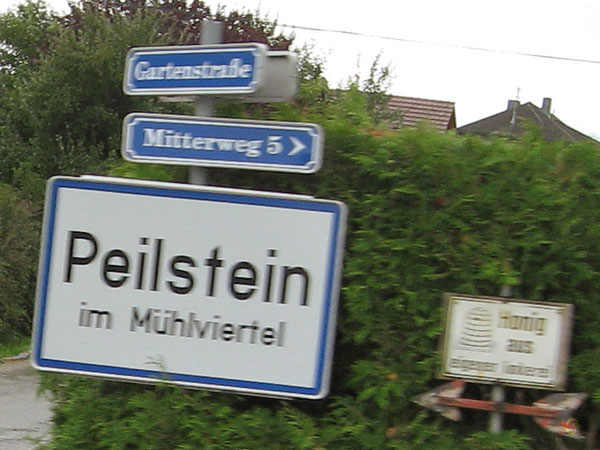
Is it still necessary to break in a new engine, or is there no need?
If it is a good idea to break an engine in, why? And if you would like to break in your new engine, how should you do that?
What will lengthen the lifetime of your engine and what will decrease it? How do you prevent your engine from consuming oil?
This page tries to answer these questions.
![]() Er is een Nederlandse versie:
Er is een Nederlandse versie:
https://www.luiemotorfiets.nl/motoren/inrijden/
Do you still have to break in a new engine?

With modern motorcycles, breaking in is not needed, is it?
Well, of course your motorcycle will not break down without breaking in the engine, but you will really see the difference in the long run: it will consume less oil when it gets older, the engine will have slightly more horsepower, and your engine will certainly last longer.
So a decent break in will result in an engine that runs better and longer.
But doesn't the engine run many miles in the factory?
Factories will take samples from the engines and have them run to test them, but most engines reach the shop without ever having run, without oil or fuel. They make their first cycles when the dealer has prepared them for riding.
The moving metal parts in the engine have been manufactured to fit exactly, of
course, but nevertheless, they never fit completely. You can only get them
fitting completely by making the engine cycle: by riding.
That is what breaking in does: polish the moving parts in the engine, and getting
them to fit snugly, which will result in a beautifully running engine.
But I read on the internet...
There is a site, somewhere on the world wide web, with the advise to break in your engine by revving it into the red zone, and to let it cool down afterwards.
What is described, is how engines for race motorcycles are prepared. Those engines only last a few races. So the method is fine for racers, but would be a shame for your new engine.
The method for race engines results in maximum tolerance for all parts. There will be less friction inside the engine, but the lifespan of the engine is decreased considerately.
So how do you break in an engine?
Much variation, few pressure
In short, you should provide much variation to the moving parts, while pushing them as few as possible.
Variation
Much variation means that you try to ride with a varying rpm all the time. So you should avoid long distances on interstates or freeways, at constant speed.
The gearbox needs breaking in as well, so try to vary the gears while riding too.
Avoid "work"
You should try to make life as easy as possible for your new engine: it should never "work" hard.
That means that you should avoid riding steep hills (which is easy when you live in the Netherlands, by the way).
It also means that you should not accelerate hard. Try to accelerate as if you're driving in
a really underpowered car. It may be hard, but when you're waiting at a red light, you should
not be faster than the cars around you when it turns green!
The day that you're gone before they noticed will not be far away, but for now, please
refrain.
To be easy for your new engine, you should keep the rpm's a bit higher than you would ride normally. Try to imagine that you ride a bicycle, uphill: slowly in a very low gear will be the easiest.
No cold, please
Try to avoid riding in cold waether. The oil will be thicker, so the engine will have to work harder.
Not too many and not too few rpm's

Not too many rpm's
The booklet that came with your new motorcycle probably says something about the maximum rpm's for the first 1000 kilometers (often there will be a number for the first 100, the second 400 and the third 500 km's).
In most cases, you should keep them below 4000, for the first 100 kilometers.
Of course, after having passed such a "magical" number of kilometers, the idea is not to change the rpm's suddenly to the next maximum. Easy does it!
Just let the rpm's climb, veeeery slowly, from time to time, every time to a slightly higher top, and then back again.
Ideally, you try a higher number of rpm's for the first time whe riding downwards on a slope.
Not too few rpm's
Most manuals don't tell you that, apart from avoiding too high rpm's, you should also avoid too few.
Riding with too few rpm's means that the engine would work too hard, in the same way as it is hard work when you ride a bicyle in a very high gear.
A guiding rule is: try to avoid running the engine below 3000 rpm's. After the break-in period, you can keep the same rule (though you can dive under it from time to time).
Acceleration
Most important is, to accelerate as slowly as possible. After break-in, there will be sweet revenge....
Change gears
Changing gears very often is good, to break-in the gearbox.
It will be very easy to change gears often, as the range of rpm's that is available is very narrow, in the beginning: between 3 and 4000 rpm. So you will change gears often almost automatically.
A pillion rider?

Your motorcycle is allowed to be lazy!
No, for the time being, don't take your boy- or girlfriend along. Those times will come, later on...
And how about Nicasil cylinders?

And how about nicasil?
Nowadays, many cylinders have got a thin layer of nicasil. Nicasil is a hard material, so it hardly gets polished. Tolerances can be kept lower.
But the downside is that, as you can imagine, breaking in will take more time.
The approach is to keep to the break-in scheme for all motorcycles, but to be gentle afterwards: slowly increase the pressure.
It is not unusual for a motorcycle with nicasil cylinders to consume a bit of oil during the first 40.000 kilometers! Afterwards, the cylinders will last forever.
After break-in

Increase the rpm's
After break-in, it's important to get the engine through all available rpm's. You can even begin to do that at the end of the break-in period.
So, from time to time, let the needle crawl until the red area.
But take your time to get there: let the needle crawl as slowly as possible, just as you had to accelerate at the green light, during the first kilometers.
Uneven
When you would forget to do that, the cyclinder would stay uneven: the cylinder would have been polished smoothly, apart from a small area in the upper part: that area will only get polished when the piston gets a very high speed, at high rpm's.
So you really have to ride at thos high rpm's from time to time, to get the cylinder smooth all the way.
Check the oil

Check the oil
Breaking in is, as we have seen, needed to reach the point where every metal part fits snugly onto the other parts. So, before the break-in period is over, it is possible that there is a bit of oil consumption.
So check the oil level from time to time!
Which oil?
Because the idea of the break-in period is to smooth metal parts by polishing them, you'd better not use an oil with optimal lubrification properties: nothing would be polished, with such an oil.
So don't put in a full-synthetic oil. A mineral or half-synthetic oil works best.
Change oil
You will probably understand that it is very important to change the oil after the break-in period. It will contain small particles of metal, and you don't want those between the piston rings and the cylinders!
Comments, Q & A, on a separate page




